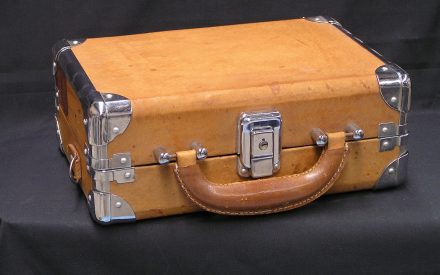The Basics
Broadband: Fast, Reliable connection to the Internet
- Send\Receive multiple video streams\data at the same time
- Numbers move up with technology and applications
- 25/3 – FCC definition but this is now too slow
- 100/20 – defined in ARPA and Infrastructure bills
- 100/100 – Standard states and ISPs are adopting
- 1GB/1GB – Current gold standard
Bandwidth: Amount of Data that can be transmitted at one time
- Measured in Megabits\Gigabits per second where the larger the number, the faster the connection
- Generally, see two numbers 10/2
- Most connections are asynchronous
- First number is download or downstream speed, or the speed you can receive data from a site
- Second Number is upload or upstream speed, or how fast can you send data to a site. This is becoming more important now with more people working/studying at home
Latency: the delay before a transfer of data begins following an instruction for its transfer.
Jitter: the variation in time delay between when a signal is transmitted and when it is received over a network connection
Types of Broadband Infrastructure
Fixed Broadband: Connection delivered to home or business via cable or fiber. Major providers include (Internet Service Providers or ISPs)
- Companies dedicated to providing broadband
- Electric coops
- City utilities
Fixed Wireless: deliver connectivity without direct connection
- Depends on “line of sight”
- Affected by weather
- Improved technologies continue
- Transmitted from large towers to antennas on homes
High Orbit Satellites:
- Stationary satellites
- Limited capacity
- High latency
- Expensive
- Weather affects performance
Low Earth Orbit Satellites:
- Still experimental
- Latency should be reduced
- Greater capacity and bandwidth
Mobile Broadband:
- Delivered via smartphone through the phone’s data plan. If the data cap is reached, speed may be throttled to reduce usage even on unlimited data plans.
- May also deliver home internet via other devices such as
- WiFi gateway
- Hot spots
Coaxial Cable (Coax):
- Typical for most cable TV and home internet connections
- Cable using wire
- Signal transmitted as an electrical voltage
Fiber:
- A different kind of cable
- With glass or plastic fibers that transmit data as light
- Carries more data than traditional copper or coaxial
- Upgradable by adjusting equipment at ends of fiber
- Can be buried or ran on existing utility poles
- Fiber to the premises (FTTP)
- Also known as Fiber to the home (FTTH)
- Fiber delivered into the residence vs traditional coax or copper
Closing the Gaps
Last Mile: last leg of connection to home or business from the ISP’s points of presence (POP)
- transmitting antenna wireless
- wired connection to the home
Middle Mile:
- From central nodes to the POPs of the ISP
- Delivered via internet exchange points (IXP)
- From content delivery network providers
Connecting at Home or Work
Smart Devices:
- Sometimes called Internet of Things (IOT)
- Determines in-home speed requirements
- Can be used for multiple devices in the home, such as refrigerators, heating/air systems, printers, televisions, gaming consoles, streaming devices, doorbells, and security systems.
Ethernet:
- Short distance in-building connections for network
- Limited to 300 meters
- Connections look like phone plugs only wider (8 wires instead of 4).
- Connect devices like computers, TV’s, Printer via ethernet
WiFi:
- In home/business wireless connectivity
- Requires a wireless router
- May require extenders in businesses or homes
Modem:
- Converts the Internet signal
- Form devices can connect to ethernet or WiFi
Router:
- Directs incoming digital traffic
- Appropriate device in the home or business
- Ethernet ports
- May also have WiFi capability
- Modem, Router and WiFi in one device
Connection Site Terms – Where We Go
IP Address (Internet Protocol Address):
- Each device on the internet is assigned an IP address
- Two versions currently
- IPv4 – version 4
- 32-bit integers that can be expressed in hexadecimal notation.
- The more common format, known as dotted quad or dotted decimal, is x.x.x.x
- Example 128.205.45.6
- We are running out of IPv4 addresses
- IPv6 – version 6
- Addresses are 128 bits long.
- The larger address space is to allow for more devices to be connected to the Internet
- Example – 3FFE:FFFF:7654:FEDA:1245:BA98:3210:456
Transmission Control Protocol/Internet Protocol (TCP/IP):
- Suite of communication protocols
- Allow for sending and receiving data between devices
- Allows the breakdown of information into packets
- Can be sent over different routes on the Internet
- Packets reassembled at receiving may arrive in a different order
URL (Uniform Resource Locator):
- Address for a web site (wikapedia.org)
- Each site or resource has a unique URL
- URLs are registered so there are no duplications
- URLs are assigned based on the IP address of the device hosting the site
- Agreed upon protocols for creation
DNS (Domain Name Server):
- URL’s need to be translated to the IP of the hosting device
- ISPs and other internet services host DNS servers
- Allows us to use text-based URLs instead of remembering IP addresses
The Cloud: applications hosted remotely, such as file storage, backup, accounting, e-commerce hosting, banking, job search, applications\forms, collaboration, video conferencing
Opportunities with Broadband
Telehealth: Access to physical and mental health services remotely
- Access without driving several hours
- More likely to use extended services
- Access from home if bandwidth allows
- Diagnostics over video
- Potential to do remote screenings
Precision Agriculture/ Smart Agriculture: Uses digital data to help streamline farm operations
- Examples of advantages:
- Reduces inputs (funds)
- Reduces environmental impact
- Spots diseases/insects/nutrient deficiency
- Supports herd management such as record keeping, nutrition, animal health, talking to advisors/Extension educators
- Requires wireless connectivity to the field and fiber connection to transmit the increasing data available
Entrepreneurship: Provides opportunities for
- Access to support
- Business planning
- Financial assistance
- Education
- Technical assistance
- Other entrepreneurs
- • E-Commerce
- Selling beyond the local community
- Marketing beyond State\Nation
- Example – Hamilton MO Star Quilt
Education (E-Learning):
- Education for youth – K-12 & higher education
- COVID demonstrated this need
- Educators need training in this new method
- Allow for college degrees without leaving home/ saves money
- Continuing Education – all ages
- Continued learning improves mental\physical health
- Opportunities to meet people from different communities, cultures
- Professional Development – certificates, required training
Attracting and Retaining Community Members:
- Remote Workers
- People no longer need to move for work
- People wish to move to smaller communities for opportunities for children or safety and security
- Retention of young local leaders
- Strengthen community
- Community grows own leadership
- Opportunities for business

 What's Next in Wisconsin Broadband, November 2025 -
What's Next in Wisconsin Broadband, November 2025 - Broadband Expansion in Wisconsin: Case Studies - Page 3
Broadband Expansion in Wisconsin: Case Studies - Page 3


